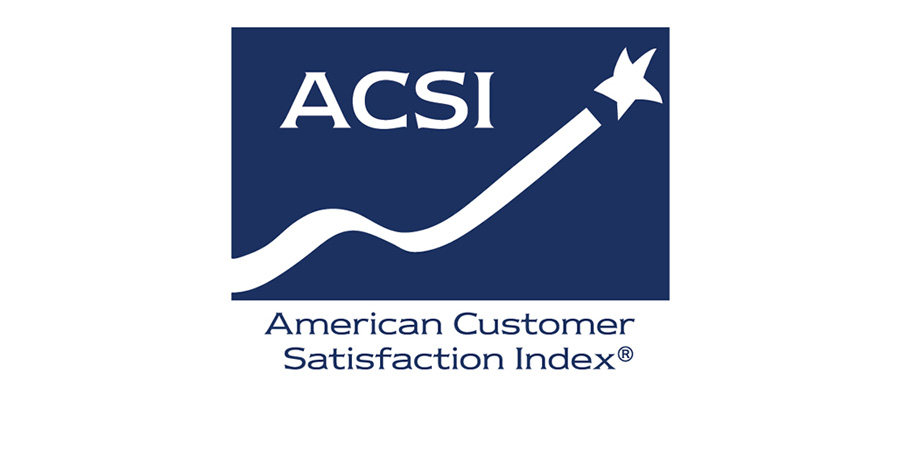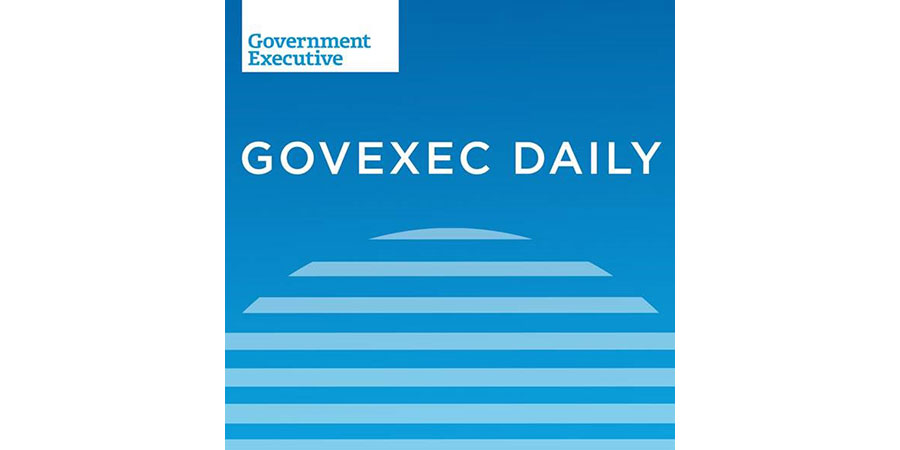
How to Ensure Long-Term Profitability through Customer Satisfaction
In today’s competitive marketplace, customer satisfaction is critical to long-term profitability. Customers whose needs and desires remain unmet will take their business—and their wallets— elsewhere.
When it comes to financial performance, most companies look hard and often at tangible assets, but the balance sheet neglects their most valuable intangible asset—the customer. Improving financial performance requires understanding current levels of customer satisfaction, what it means for the future, and identifying ways to optimize it profitably.
But, with so many measurement tools available, what’s the best way to measure customer satisfaction and, more importantly, how do the resulting data translate into a profit-enhancing action plan?
This white paper examines the benefits of using a proven measurement methodology of the American Customer Satisfaction Index (ACSI) to measure customer satisfaction—and maximize profitability.
“Bad measurement leads to bad information. Bad information leads to bad decisions. Bad decisions lead to competitive vulnerability. Competitive vulnerability leads to shrinking earnings and loss of capital. Show me a loser and I will show you a company with poor customer measurement systems.”
HOW TO MEASURE WHAT HAPPENS
Business success is largely determined by who wins the battle for customers’ hearts and minds. This has been proven empirically by linking quarterly scores released by the American Customer Satisfaction Index (ACSI) to concurrent financial performance, a connection studied and published in numerous academic journals. According to an article in the Harvard Business Review, “a one-point change in ACSI [score] is associated with a 4.6% change in market value.” Companies that deliver superior customer experiences consistently exhibit more stable cash flow and greater gains in shareholder value.
Secrets of Long-Term Profitability
Most customers consider multiple factors when choosing products and services, including past experiences and current perceptions. They also face endless competitive options at their fingertips and collide with relationship-damaging practices instituted by a current company (which, in some cases, practically pushes the customer into a competitor’s lap).
Examples of relationship-damaging practices are wide-spread:
- Endless hold times for customer service calls
- Confusing, circuitous phone menus
- Disengaged or apathetic sales staff
- Poor problem resolution and complaint handling
- Punitive account charges
This means a company’s relationship with its customers is extremely fragile. A single disappointing experience can damage a relationship and reputation. However, taking the right action can win back the customer—even strengthen their loyalty—but it requires understanding what the “right” action is (i.e., what is a satisfactory solution in the customer’s eyes) and how to implement that action profitably.
Smart companies understand that they must take profitable action to support and encourage customer choice in their direction. A customer satisfaction measurement system with predictive analytics is fundamental to successful customer relationship management and strategic planning. Customer-focused strategies should ultimately build a foundation of long-term customer patronage in order to create or maintain a competitive advantage. This means continually monitoring the customer base to identify and improve those customer strategies with the highest rates of return.
The benefits of cultivating an optimally satisfied customer base are significant and wide-ranging. Satisfied customers produce additional revenue because they are more frequent purchasers, less price sensitive, more likely to recommend that company and its products to others, and more likely to remain loyal longer. Satisfied customers also cut down on expenses—they return fewer products and reduce marginal sales and marketing, service and warranty costs.
Lies Numbers Tell
But what does continually monitoring your customer base actually entail?
Many measurement tools rely on traditional market research. That is, they simply ask customers what they consider to be important. Some even use a single measure, such as a customer’s willingness to recommend the company to others.
Unfortunately, this approach is too simplistic to be useful. It’s essentially a report card that provides a single grade. You know a C is worse than a B (and better than a D) but it’s impossible to know how it breaks down by subject. More frustratingly, you have no basis for where your performance needs to improve or how you should improve it.
The whole idea of monitoring customer satisfaction is to uncover and optimize the customer strategies that pack the biggest profit punch. Consequently, a simplistic approach can’t provide value because it doesn’t gather enough information to know what action to take. As a result, the numbers collected from a simplistic approach:
- Underestimate the costs of creating dissatisfied customers,
- Inadequately reflect the benefits of satisfying them,
- And most importantly, misdirect action aimed at improving the customer experience.
So what’s the best way to identify a good measurement system?
A good measurement system converts noisy and imperfect raw data into accurate, forward-looking, relevant and actionable information. Thus any customer satisfaction measurement tool should be evaluated on how specifically it suggests actions to improve the profitability of customer relationships.
SATISFACTION – THE BALANCING ACT
The strategy of sustaining customer loyalty by reducing costs and over-servicing complaints is common. But this method has its pitfalls, perhaps best exemplified by U.S. auto companies. While struggling to keep pace with the satisfaction levels of foreign competitors, American auto makers “bought” loyalty with on-going discounts and rebates. But their strategy took a toll over time, resulting in dwindling market share and a swiftly declining profit margin.
There’s a balancing act—a “sweet spot”—of customer satisfaction where customers feel serviced and profitability is increased. Aspiring to “zero dissatisfied customers,” while admirable, means accommodating all customer expectations, no matter how costly. In order for customer satisfaction to be a viable profit strategy, optimizing –not maximizing—customer satisfaction is the key. But because there is a point where the costs of increasing satisfaction overshadow the additional revenue and profit it produces, this level of decision-making requires a rigorous, statistically-accurate methodology so that diminishing returns and financial impacts can be identified and fully understood.
Smarter Segmentation
Obviously, customers don’t contribute equally to profitability. Yet profits earned from best customers are often spent servicing least profitable—or even unprofitable—customers. The first step in correcting this misallocated investment begins with identifying the customer segments that can be satisfied profitably. Investing in customer satisfaction without understanding customer segmentation will undermine financial objectives and stifle potential profitability gains.
Don’t Exceed Unnecessarily
Each contact in the customer life cycle (e.g., sales, service, maintenance) is important to meet customers’ ongoing needs and expectations. However, some contacts produce greater satisfaction than others. The secret to maximizing ROI is identifying which points in the customer life cycle are most pivotal to customers and what specific improvements will produce significant, measurable results.
We might assume that if customers who contact a call center are satisfied with a three-minute wait, they would be thrilled with two minutes—but the benefit may not justify the cost. While customer expectations should be consistently met, they should not necessarily be exceeded. If customers find a three-minute wait satisfying, a two-minute wait may not increase their satisfaction. They might not even notice a difference. So the time and money spent hiring and training more call center reps in order to reduce wait time to two minutes wouldn’t cause customers to be any more satisfied—or spend any more money. Yes, expectations would be exceeded … unprofitably.
PLAN & MEASURE SUCCESS
A successful satisfaction measurement system features three major factors:
The system must provide accurate, relevant, and actionable insights into the customer experience throughout a customer’s lifecycle. What matters most to customers? Precisely how well is the company serving customer needs? What are the best improvements to the customer experience that will maximize ROI?
Armed with these insights, it should be clear what actions need to be taken. When and how much should a company invest? Which improvements provide maximum return? Or where can cuts be made with minimal impact on customers?
After implementing improvements, results should be measured and reported. Were the expected results achieved? What was the actual impact and financial return? How is feedback used for continuous improvement? What new priorities or adjustments should be implemented?
CFI Group offers a proprietary measurement methodology centered on these three key factors. Over the past 20 years, CFI Group has implemented it in several thousand client projects with significant success, and now serves a wide range of industries and agencies around the world.
SIX PRONGS OF SATISFACTION MEASUREMENT
To ensure maximum accuracy, validity, and comprehensiveness, CFI Group’s methodology uses a six-pronged approach that consistently delivers meaningful insights, clear action plans and reproducible results:
This preliminary step helps to refine and clarify objectives and key deliverables. Secondary research builds on and supports objectives. Additionally, CFI Group:
- Identifies current customer strategies and business issues
- Analyzes customer base and segmentation
- Evaluates the competitive environment
- Designs qualitative interview guidelines for in-depth customer interviews
- Determines performance measures
In its qualitative approach, CFI Group utilizes a combination of the latest social-psychological techniques to validate customer perceptions, taking “Voice of the Customer” research to a new level. CFI Group has Riva-trained consultants on staff who are experts in the following:
- One-on-one interviews. This approach eliminates the “strong voices” bias effect of focus groups.
- Open ended, semi-structured interviews. Issues addressed include topics identified through secondary research and management interviews while still leaving customers an opportunity to discuss “top-of-mind” issues. This opens the door to identify issues that might otherwise go undetected.
- Metaphors and narrative accounts. Customers tell stories, use metaphorical descriptions, and offer other experiences. These innovative social-psychological research techniques and conversational interviews enable customers to relax and converse more openly.
CFI Group’s methodology then identifies and categorizes relevant factors, regrouping information into a subsequent model. This maximizes information gained through interviews.
Customer surveys are designed and implemented to identify crucial aspects of the customer experience. CFI Group uses a multiple-item measurement approach that delivers superior precision at reduced sample sizes. Surveys are administered using phone, email, IVR and web-based survey methods (in addition to paper-based surveys where appropriate). The survey data is used to build a predictive model of customer satisfaction and loyalty. Next-generation statistical modeling techniques correctly identify and quantify the cause-and-effect relationships present in the data. This model then gauges the impact of satisfaction drivers across identified customer segments to pinpoint improvement targets.
Insights alone are helpful to a certain point—the next level requires the ability to turn insights into a ready-to-implement action plan. CFI Group’s advanced predictive models provide a proven approach to determining cause-and-effect relationships. These relationships are then tested, validated and finalized prior to implementation. This predictive model accurately and reliably links proposed business improvements to predicted business outcomes, helping to determine a client’s most effective profit-promising actions.
The resulting model portrays customer experiences of service, product, and price driving satisfaction that in turn drives retention, share-of-wallet, likelihood to purchase other products, and ultimately financial performance. Clients receive results of the measurement and modeling in terms of scores and impacts. Quantification then predicts the financial impact of satisfaction on ROI for each customer segment. This process identifies business touch points most valued by these segments and the improvements that offer the greatest financial returns –the most significant benefit of CFI Group’s methodology. This empowers clients to prioritize customer segments based on their expected value, further focusing action planning to optimize financial performance.
Lastly, using the most reliable, quantifiable and action-oriented predictive model available, CFI Group creates recommendations based on qualitative and quantitative findings. These blended recommendations are presented as a matrix according to their score and relative impact in driving satisfaction and behavior. This balancing of scores and impact by customer segment helps determine the best way to prioritize investment possibilities. To maximize financial results, CFI Group establishes Key Performance Indicators (KPIs) to measure and track performance toward specific goals. The KPIs are linked to attributes in the survey and, over time, are used as early indicators of performance improvements or declines. These satisfaction drivers are monitored on an ongoing basis and continuously refined.
INSIGHTS, ACTION, & RESULTS
When it comes to satisfaction measurement, the importance of precision cannot be overestimated. Information that is gathered, analyzed, and modeled with uncompromising accuracy and statistical integrity significantly impacts a company’s ability to gain insights, plan appropriately, and achieve and measure results. Insights must carefully inform actions, actions should predict positive financial outcome, and results must be meticulously gauged and refined.
For clients focusing on increasing profitability through customer satisfaction, a simplistic methodology is statistically incapable of delivering the insight, action and results needed for this forward-thinking strategy. CFI Group’s methodology is both more effective and more predictive of actual financial results. This means our clients can better grasp the factors that influence their customers’ satisfaction. This provides clients greater accuracy in decision-making and greater confidence in sustaining long-term success.
Other Resources
- Date
- December 12, 2017
center Description You probably already have a very good idea of what drives customer satisfaction. Customer service professionals can generally create surveys that, on the surface, […]- Date
- March 13, 2017
center How to Ensure Long-Term Profitability through Customer Satisfaction icon Description In today’s competitive marketplace, customer satisfaction is critical to long-term profitability. Customers whose needs and […]- Date
- March 13, 2017
center Description Applying the American Customer Satisfaction Index (ACSI) Technology to the Management of Government Services: Rationale, Rigor and Results The Government Performance and Results Act […]- Date
- March 12, 2017
center Description CFI Group Delivers American Customer Satisfaction Index (ACSI) Methodology: National Measure of Quality and Predictor of Corporate Performance Established in 1994, the American Customer […]








